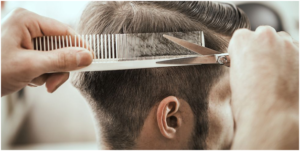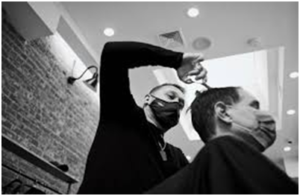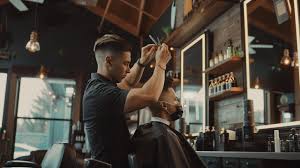Here’s the full guide on the process that is done in men’s salon in Westchester for cut men’s hair
The County is a blend of bustling cities, quaint villages, and picturesque towns as well as open spaces and a network of beautiful parks. Westchester is made up of six cities, 19 towns, and 20 villages. Westchester County is known for top-notch public schools and high quality of life.

A heart hairstyle is the best accessory
The process proves unnecessarily hard. And the anxiety involved in switching styles overwhelms even the coolest cat. Although the core styles haven’t changed much since the early 20th century, icons aplenty can shift and reshape the status quo with a simple visit to their high-end salon. They’ll leave with a gravity-defying haircut you envy, fetching camera-wielding paparazzi along the way.
So where you would start from?
Unless you’re forced to abide by rigid grooming regulations – a la the military, although they’ve since adapted their code to include ponytails, buzzcuts, and dreadlocks — there’s no sense in limiting what your hair can look like.
It’s also important in men’s salons in Westchester to consider length. Some styles take months — if not years, depending on how fast your hair grows — to achieve. Others are quick yet irreversible decisions. Before you go bald or commit to billowing layers, think about it a little more simply. Look at yourself in the mirror; then at your photo reference; yourself in the mirror again; the haircut once more; envision it all over again. Bring the photo with you but be ready to make adjustments, albeit minor.

Life cannot be perfected but your hair can
Here are some of the terms that are needed to be considered
â— Neckline: Your neckline can be finished in four ways, squared, rounded, tapered, and blocked. Squared sharpens the edges but fades into your skin. Rounded is the same as squared but with softer edges. Tapered doesn’t assume a shape and naturally progresses from hair to no hair. Blocked doesn’t fade from one length to another and defines a natural neckline.
â— Taper and Fade: These two are somewhat interchangeable. Taper means your haircut changes from one length to another. Fade is the progression from a certain length to the skin aka a cut by a clipper without a guard.
â— Arches: This is the outline around your hair. Higher arches work well with closer, polished cuts. Natural arches grow out less noticeably.
â— Sideburns: Your sideburns can be trimmed above, at, or below the ear. If you’re unsure, let your barber (or how you wear your facial hair) be the guide.
â— Scissor Cut: Just as buzzes require clippers, some cuts call for scissors exclusively. Tell your barber to steer clear of the plugged-in groomer if you’re seeking a more natural look.
â— Disconnected: This means there’s a separation that a difference in length or texture — between the top and sides of your haircut.
â— Volume: The height and thickness of your hair.
â— Bulk: Excess weight that does not contribute to the hair’s volume.
â— Hairline: The point on your head where the forehead meets hair.
As we conclude, before you cut your customer’s hair you must know about the basic terms in order to eliminate any drawbacks or mishaps during the process. That means the haircut your favorite athlete wore last week won’t look identical on you — or your friend or your father — and especially so a week or two after it’s cut. Tailoring a style to your face shape, aesthetic, activities and schedule require assistance from a trained barber. First, figure out your face shape. Then, seek out a style you’re interested in, find a local barber, book an appointment and get the look you’ve been yearning for — or something close to it. And bring whichever photo you need.

